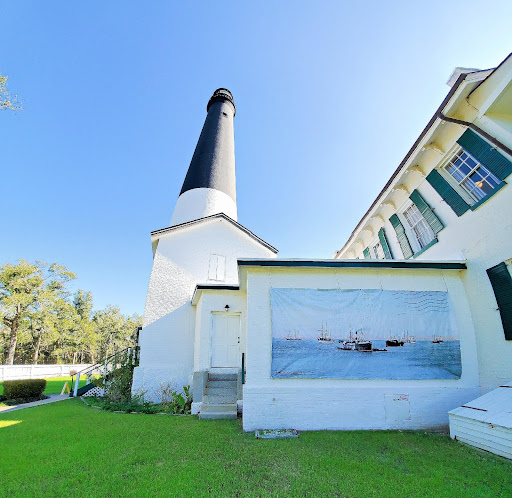Visit The Houston Museum of Natural Science while availing our chauffeur services:
American Limo provides prime chauffeur services in the United States. American Limo is top-level Limousine Service in the United States. Over the years we have served our customers with a luxurious fleet for ultimate satisfaction. We provide premier chauffeurs service to the airport, weddings, casinos, sport event, proms and corporate events. Our aim is to provide comfort, safety and satisfaction to all our valued customers. We also offer the finest limousine transportation in all major cities and Airports worldwide through a reliable and expanded Affiliate network.
Where is the Houston Museum of Natural Science located?
The museum is located on the northern border of Hermann Park in Houston, Texas, United States. The museum was established in 1909 that provides a free institution for the people of Houston concentrating on education and science. The museum stands on number seven on the most viewed museums in the United States because it welcomed 1,520,000 visitors in 2022. When you enter you will get the chance to explore permanent exhibits such as North America’s largest dinosaur hall and one of the most precious gem and geode collections in the United States. The museum is ideal for families and schools visit, tourists and locals offers refreshments and food at the café.
The museum is open all through the week from9:00 a.m. to 5:00 p.m. adults tickets are $25 each. Admission for kids, seniors over 62 and college students is $16.
The Houston Museum of Natural Science attractions and exhibits:
- Cockrell Butterfly Center:
Cockrell Butterfly Center at the Houston Museum of Natural Science is an astounding, living exhibit that displays many live butterflies in a naturalistic rainforest environment. The primary conservatory is a breathtaking three-story glass cone brimming with exotic butterflies and tropical plants. The largest and most colourful butterfly species in the world can be seen flying through the warm air, fluttering over flowers, sipping fruit juice, and occasionally settling on tourists during a typical visit. The butterflies are transported to the Centre in their chrysalis stage after being raised on specialised butterfly farms in tropical Asia, North, Central, and South America.
Enjoy an interactive experience in a three-story glass structure encompassing preserved specimens of some of the world’s largest arthropods and enjoy some games and quizzes. It has 50 of the world’s largest and vibrant butterfly species. Walk around a living butterfly habitat with over 1,500 butterflies.
- Burke Baker Planetarium:
A wide range of science and astronomy programmes are presented at the Burke Baker Planetarium. The planetarium has a Digistar 5 full dome projection system as of 2016. It is one of the country’s first 8k planetariums. The Planetarium was the third in the world and the first in the United States to adopt multiple-projector digital image capability using the Sky-Skan SkyVision system in 1998. It was originally built in 1969 with a Spitz Space Transit Planetarium, which was enhanced to an Evans & Sutherland Digistar 1 vector display in 1988. This made it possible for it to screen full-dome films, many of which were made by HMNS personnel. Since 2004, its outreach programme “Discovery Dome” has transported the planetarium experience to schools and other venues, reaching over 40,000 students annually.
- Wortham Giant Screen Theatre:
Houston’s first Giant Screen Theatre provides state of the art, 4K digital projection giving marvelous 3Dimages almost 8 stories high. Images of unsurpassed size, clarity and impact enhanced by a superb six-track sound system are projected onto a huge 60 into 80 inches foot screen.
Permanent and special exhibits include:
- Moran Paleontology Hall:
This is not some usual museum exhibit; instead, the tales of survival are filled with activity as prehistoric creatures are brought to life. Take a “prehistoric safari” that takes you from our predecessors who climbed trees to humans who hunted mammoths. As you cross the hall you will meet the courageous microbes that laid life’s foundation, marvel at the diversity of trilobites and follow fierce fish through the monumental conquest of land.
The Museum’s Hall of Paleontology has more than 450 fossils and fossil replicas, giving a clear glimpse into the marvelous 3.5 billion year story of life on Earth. From the trilobite to the gigantic Tyrannosaurus Rex, this amazing display will put you in close proximity to the animals that previously ruled our globe. The 30,000 square foot hall, which opened in 2012, is the largest extension in the museum’s history having more exhibit space and classes.
- Farish Hall of Texas Wildlife:
The Farish Hall went through renovation and reopening in fall 2014. The hall possesses the most species-rich assemblage of Texas wildlife anywhere, with more than 425 specimens, presenting over 250 species on showcase. Present day specimens like alligators, waterfowl and a white tailed deer are on the display as are endangered and extinct species like ocelots, whooping cranes, jaguars and the passenger pigeon. When visitors to a museum activate some animals, such a rattlesnake and a skunk, they genuinely “come to life” with robotic movements and noises. The exhibit includes a total of 7 dioramas that accurately depict the natural settings in which the animals lived. Customers can learn about invading species that endanger native species and their ecosystems, extinct and vanishing species, and atypically coloured individual creatures through the dioramas and other kiosks.
- Hall of Ancient Egypt:
New ideas just come to you when you have a lot of room to work with. The large Morian Paleontology Hall of the Houston Museum of Natural Science officially opened in 2013. The hall, which is the length of a football pitch, provides an alluring view on how dinosaurs and other ancient animals would have previously lived and behaved with one another. But the new structure also provided a chance to grow the museum’s vibrant permanent collection. Ancient Egypt is another topic that has continued to allure the Westerners. The hall is not divided by the time period but by theme with numerous artifacts those are 5000 years old. Five areas give a sneak into Egyptian life: environment, religion, politics, mummies and mu mummification and the discovery of ancient Egypt.
- Weiss Energy Hall:
The recently renovated Weiss Hall is full of immersive excursions into the world of energy, extending over an alluring 30,000 square-feet, approximately the size of a football field. The guests will find an assemblage of galleries inside including Energy City, the Unconventional Hydrocarbon Revolution, Eagle Ford Shale Experience, Energy Jukebox and more.
- Welch Chemistry Hall:
The Welch Chemistry Hall brings science into existence through demonstrations, touch screens, holograms, immersive displays, movies, and other unique installations that will allow visitors to learn chemical reactions and the importance of chemistry in daily life. Learn about the components that make up all matter, including our own bodies, and how innovations in chemistry have influenced society.
- Cullen Hall of Gems and Minerals:
The magnificent Cullen Hall has world’s best display collection of gems and minerals. Enjoy watching more than 750 elegant crystallized mineral specimens, comprising some of the world’s unique and beautiful examples. Visitors can stroll around display cases and fiber-optic lighting provides an ideal view of these beautiful treasures. The close Eby Hall of Mineral Science explores the history and science of mineralogy.
- Strake Hall of Malacology:
Malacology is the study of molluscs-invertebrate creatures with soft, unsegmented bodies, many of which house themselves in shells. This alluring and varied group of animals includes more than 100,000 species, varying in size from snails so tiny that we can hardly see them to big squids more than 60 feet long. The Strake Hall of Malacology features these creatures through models, fossils, dioramas, living specimens and hundreds of unique and spectacular shells.
- Evelyn and Herbert Frensley Hall of African Wildlife:
Spectators of the hall will enjoy the thrill and variety of wildlife. More than 120 species representing more than 70 species will be on showcase, comprising 42 species of birds and 28 species of mammals. Many unique and endangered species will be displayed including Okapi, Lowland Gorilla, Mandrill and Scimitar-horned Oryx, Greater Kudu, Rock Hyrax, spotted Hyaena, Egyptian Goose and Great Blue Turaco are a source of pleasure for visitors.
- Foucault Pendulum:
The Foucault pendulum, named after the French physicist Jean Bernard Leon Foucault who developed it, was originally appeared in 1851 at the World’s Fair in Paris and serves as an illustration of the Earth’s rotation. The swing of the pendulum appears to vary throughout the day. Actually, as the pendulum swings, the Earth is rotating beneath it. The pendulum will oscillate through 180° or halfway around each day at Houston’s latitude (30° N). It will remove all of the pins during this time. The length of the pendulum affects how long it takes to swing back and forth. The pendulum has a period of slightly over 7 seconds and swings from a wire that is over 60 feet long. The energy required for the pendulum to continue swinging comes from a magnet surrounding the cable at its top. As the pendulum reaches the middle of its swing, it closes a circuit that activates the electromagnet. The magnet pulls the cable away from the center position. The pendulum keeps on swinging as the world turns below.
- Earth Forum:
Which started in 2002 is a computer-aided and hands on display teaching about earth and its processes. The Earth Update software was created by Rice University with NASA funding.
Special exhibitions:
- King Tut’s Tomb:
This exhibition let visitors presume the role of British archaeologist Howard Carter as he King Tut’s tomb in Egypt in 1922. As visitors make their way through various sections of the tomb, a 1:1 scale of the tomb encircled by recreations of artefacts, valuables, and the apparatus of the burial chamber aims to provide an experience equivalent to Carter’s. Costs vary.
- The Art of Texas State Parks:
This year marks the centennial of the creation of the Texas State Park Program and this display brings together 30 paid works by famous Texas artists that show the beauty, nature and outstanding vistas of 30 Texas state parks.
- Sharks! The Meg, The Monsters & The Myths:
They are scary monsters of nightmares and significant members of the ocean ecosystem. Every type of shark known to mankind is there in this exhibit such as huge model of the ancient behemoth, the Megalodon. Visitors can feel and see from close that why these creatures have inspired so many since ages.
Make your Reservations now with American Limo and we will make sure to provide you with the best possible services. Click here and make reservations now. For special requests and queries please contact us




